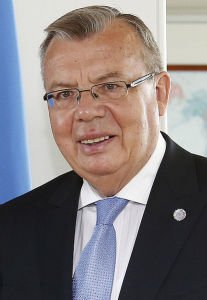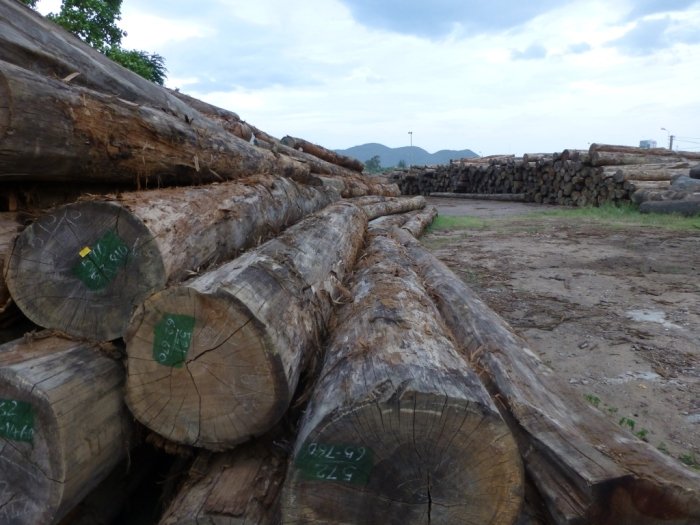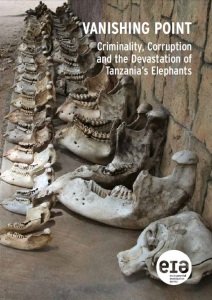How corruption is poisoning the global environment


Today (December 9) is the United Nations annual International Anti-Corruption Day. While the calendar is awash with international ‘days’ marking everything under the sun (sorry, you’ve already missed World Smile Day this year), efforts to publicise and curb corruption are worth supporting.
From the Environmental Investigation Agency’s perspective, corruption is a key enabling factor in environmental crime, especially the theft of natural resources.
 As Yury Fedotov, Executive Director on the UN Office on Drugs and Crime, said today: “Once considered to be the simple cost of doing business, corruption is now the destructive price paid by millions of citizens, especially the poor. It may be seen in missing tracts of forest, lost classrooms, absent hospitals and unbuilt roads. Corruption, today, represents a serious brake on the forward motion of sustainable development and building effective institutions.”
As Yury Fedotov, Executive Director on the UN Office on Drugs and Crime, said today: “Once considered to be the simple cost of doing business, corruption is now the destructive price paid by millions of citizens, especially the poor. It may be seen in missing tracts of forest, lost classrooms, absent hospitals and unbuilt roads. Corruption, today, represents a serious brake on the forward motion of sustainable development and building effective institutions.”
Research has shown that the more affected it is by corruption, the poorer a country’s environmental performance. An assessment ranking countries according to an Environmental Sustainability Index found the variable with the highest correlation to be the Corruption Perceptions Index produced annually by Transparency International (TI).
Such a theoretical link is borne out by the findings from many of EIA’s field investigations into environmental crime. Take, for instance, the cross-border smuggling of logs from Laos to Vietnam – corruption is a factor at virtually every stage in the chain.
The starting point is the award of logging contracts by senior officials in the Lao Government. The word ‘opaque’ does not do justice to the murky method of allocation. In 2007, EIA undercover investigators met a Thai businessman in the process of bribing his way towards securing huge amounts of timber in Laos. He said: “I pay a lot of money for this contract, more than $320,000. I pay government people.”
He was planning to pay a further US$900,000 via contacts in the Lao military before EIA exposed his scheme. If the deal had gone ahead, he would secured logs worth over US$500 million.

Logs stolen from Laos in the Vietnamese port of Qui Nhon (c) EIA
Next in line, provincial officials where the logging is taking place take a share of cut, and then lower down the chain Lao customs officials at the border receive bribes to wave the logs through despite the country’s log export ban. It is not unusual to see shiny new four-wheel drive vehicles parked outside remote customs checkpoints along the Laos-Vietnam border.
The corruption chain is mirrored on the Vietnamese side of the border where customs officials are paid to let the logs in, provincial officials levy ‘taxes’ on the illegal timber and well-connected companies, sometimes linked to the Vietnamese military, receive the wood. It comes as no surprise that TI’s 2014 Index ranks Laos near the bottom in terms of corruption levels, assigning it 145th out of 175 countries. Vietnam is only slightly better, ranked at 119.
Although the TI Index is subject to criticism for its focus on perceptions rather incidences of corruption, it nevertheless provides a useful annual barometer of a country’s direction of travel in fighting corruption. One of the surprises in the 2014 index is the fall of China from a rank of 80th in 2013 to 100th this year, despite the Government’s much-publicised crackdown on corruption. While luxury brand manufacturers have been bemoaning falling sales in China due to nervous officials not wanting to display their wealth, the TI ranking suggests the clampdown is tightly targeted. Anti-corruption activities in China remain the preserve of the Government and the involvement of the public is usually unwelcome. Earlier this year, three activists were jailed for up to six-and-a-half years for simply holding up banners calling for officials to disclose their assets.
The importance of an active civil society and free media in curbing corruption is shown by the example of Indonesia. In 2000, shortly after Indonesia’s first democratic elections, Indonesia was the fifth most corrupt country in the world, according to TI. Yet with the advent of a freer society, it has steadily climbed up the table to a ranking of 107th out of 175 countries. A vital aspect of progress in Indonesia has been the establishment of a powerful anti-corruption commission, with its own investigators and courts. The commission’s probes have included environmental crimes. In March, it secured a 14-year jail sentence for the former governor of Riau Province for illegally issuing logging permits.
 Last month, EIA released a major new report, Vanishing Point, exposing how corruption is one of main factors in Tanzania losing half of its elephant population to poaching in the past five years. The report found evidence of corruption and complicity ranging from politicians down to customs officers who charge US$70 per kilo to let ivory shipments through. Such findings are supported by the TI Index; Tanzania has dropped down the rankings from 102nd position in 2012 to 119 this year.
Last month, EIA released a major new report, Vanishing Point, exposing how corruption is one of main factors in Tanzania losing half of its elephant population to poaching in the past five years. The report found evidence of corruption and complicity ranging from politicians down to customs officers who charge US$70 per kilo to let ivory shipments through. Such findings are supported by the TI Index; Tanzania has dropped down the rankings from 102nd position in 2012 to 119 this year.
So the main message from EIA on International Anti-Corruption Day is that to effectively tackle environmental crime and protect the environment, action against corruption is vital.
Finally, it needs to be pointed out that corruption is found around the world, not just in developing countries. It just takes different forms. A recent study by the Organisation for Economic Cooperation and Development looked at 400 business deals in 41 countries over 15 years and found that most bribes were paid in developed countries with the knowledge of senior management, and the average bribe paid was almost US$14 million. Corruption truly is a global scourge.